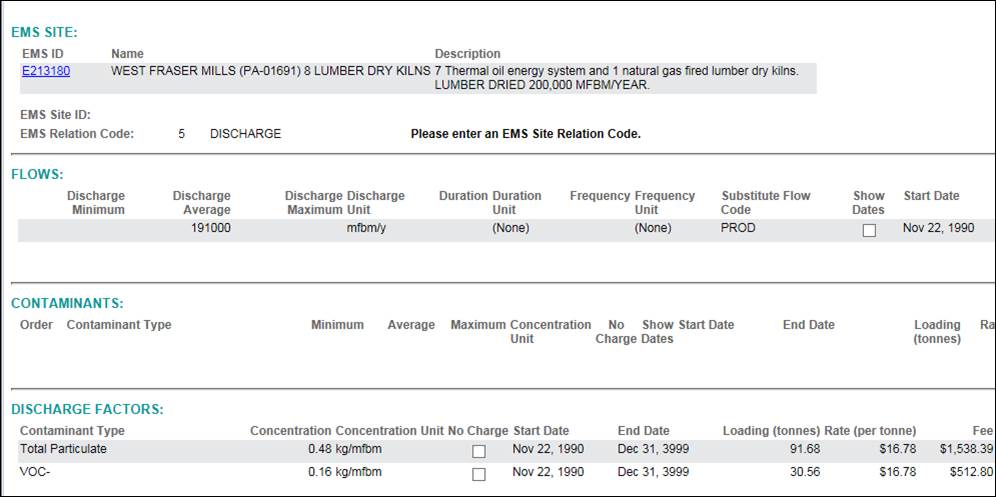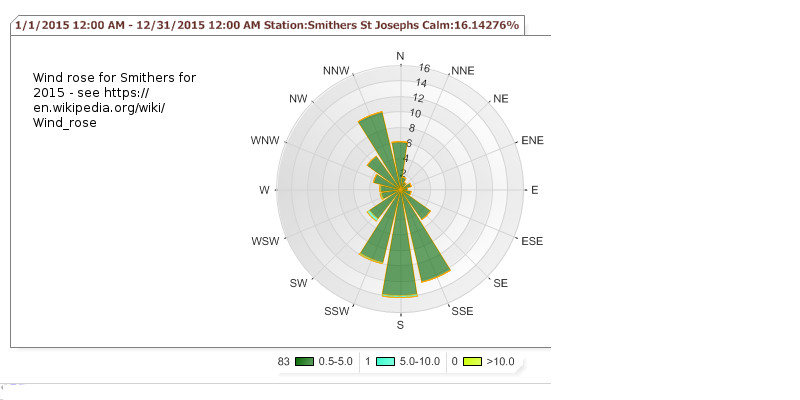The context in which emissions take place is very important. Smithers is by no means a pristine airshed. Immediately upwind of the main populated part of town is Pacific Inland Resources, a West Fraser sawmill. I recently had occasion to discuss their emissions with a friend and was asked to put my thoughts in writing. Below is my rant, with a link to the PIR Discharge Table.
Here’s the gist of my rant this morning (January 19, 2016) about air pollution in Smithers.
The regulatory scheme consists in part of the Province issuing air emissions permits to major emitters (read “polluters”). The Environmental Management Act authorizes the Minister or delegate to issue permits. I have a copy of PIR’s current permit here: PIRsPermit.
A preliminary clause in the permit says that the permit authorizes the discharge of air contaminants to the air. “Contaminant” isn’t defined in the permit, but is in the EMA. It is a substance that harms or has the capacity to harm a person. So the harm done by authorized emissions is in view at the earliest regulatory stage – an air emissions permit is permission to injure people. The people affected are easy to identify and a huge amount of clinical and epidemiological work has gone into identifying susceptibility and harm done, mechanisms and so on.
If I were to pursue a polluter in court, in a tort action (sue the bastards), I would be faced with the fact that the Province, having issued the permit, will defend it, that is the Ministry of Attorney General will fight the action against my claim. So would the polluter. So I’d have to have very deep pockets to pursue the case in the first place, and the polluter would be sure to claim due diligence in carrying out the permit terms – in practise this is a pretty good defence. This works in defending a permit at the Environmental Appeal Board, too; we recently saw that at the Alcan SOx fandango in Kitimat.
So one branch of the Province’s tactical distraction of the population at large is to noisily fix the blame elsewhere, for example on woodstoves. You can easily hear that wood stove pollution is the number one problem and that we need look no further for the source of the adverse effects of smoke pollution – “we have met the enemy and he is us” as Walt Kelly said. It’s pretty much bullshit but needs better data.
So I took the current permit limits for PIR and compiled the data into a table that I’ve included here. I wanted to compare mill emissions limits with tested wood stove emissions. Wood stoves are rated by the EPA and CSA for their emissions of total solids per hour. I take it that this is Total Particulate Matter, the term used in the permit limits. So an EPA/CSA certified stove typically has emissions of 4 grams per hour. PIR’s emissions limits (excluding the kiln, an important source) sum to 56492 grams/hour. So this would be 14000 nice clean stoves. Not likely. An old belcher might have emissions of 40 grams/hour, so that would mean there’d have to be 1400 old beater stoves like this. Running 24×7 for 365 days a year. Not credible.
Maybe it’s time to check out the PIR Discharge Table (above), why not do that now.
If there’s an error in my arithmetic I’d be interested in hearing about it so please do speak up. I have not done this calculation for NEWPRO’s current permit because it’s a PITA and unlikely to be applicable and I don’t know what new permit limits if any will look like. The speculative figures in SLR’s 2015 report are of unknown relevance.
I have examined tax data, here:
for the kiln and seen the estimated VOC output from the kiln but don’t have a substantiated conversion factor. It will certainly increase the total though.
It is important to note that no audit is ever done on PIR’s (or indeed on anyone’s) compliance with emissions limits. There is a legal requirement to report to the feds under the National Pollutant Release Inventory regulation. Self-reported data has a tendency to understate the matter and in this case report under by an order of magnitude, with unknown sources and accuracy.
Scott Vaughan, Commissioner for Sustainability and the Environment, is an officer of parliament and a couple of years ago undertook a review of NPRI data issues and concluded that it was shit. Environment Canada agreed.
So there isn’t any reliable way to do source apportionment in Smithers from any data sources I’m aware of and there is zero accountability from the Province or the polluters, just distraction. We can and do know ambient levels and know they are high. I’m not aware of any path forward that offers a realistic hope of reductions.
There was a discussion at the CRB that Smithers pollution is in Smithers and so is outside the LRMP. Historically speaking the LRMP is a project of the CRB, not its raison d’être and the no-municipality issue may be countered by observing that PIR is situated outside the municipality. The pollution, of course, goes wherever the wind blows, mostly into town.

